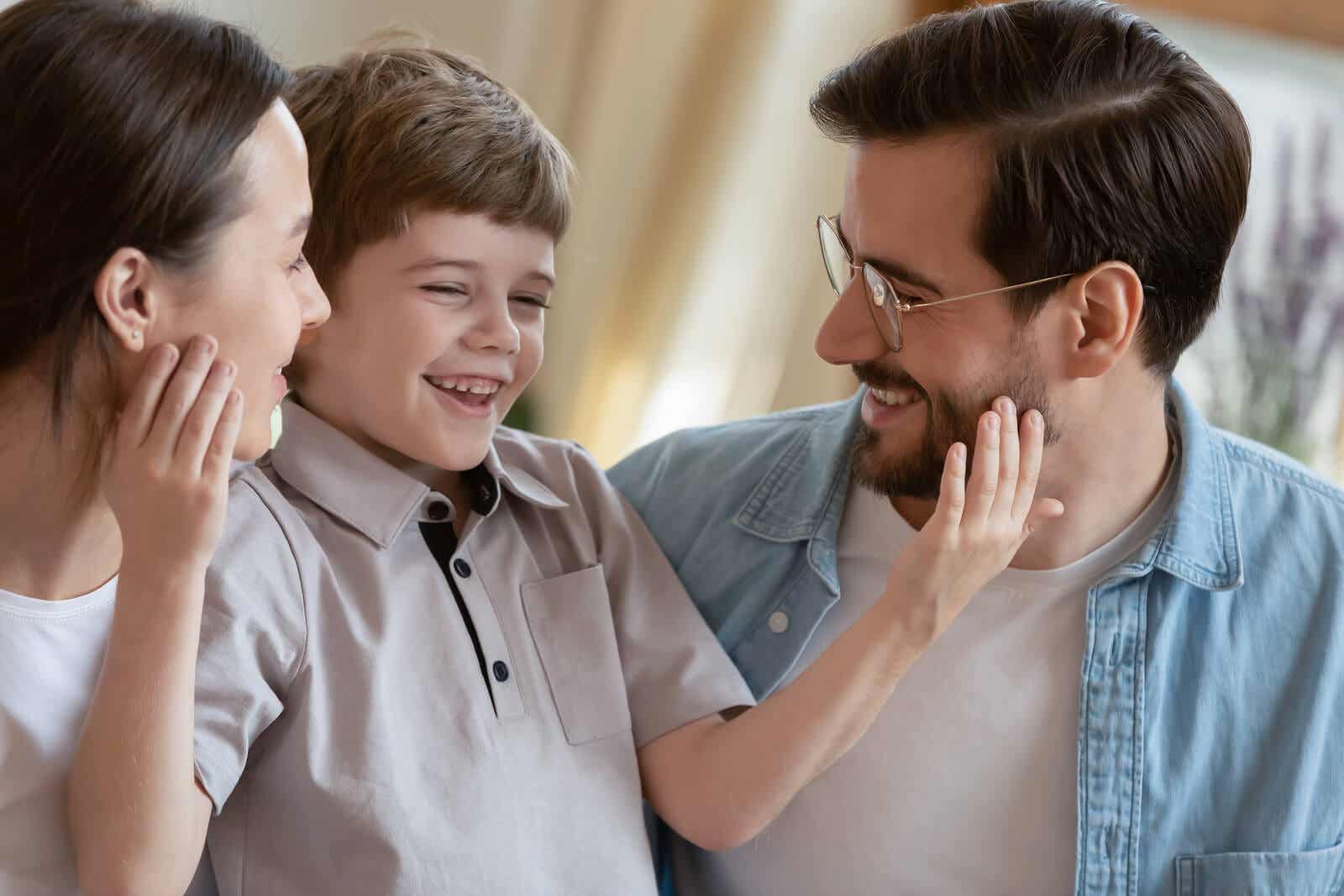Connected Parenting is the Secret to Happy Families

It’s not easy being a parent; sometimes, it can be challenging. No child comes with an instruction manual to help make parenting easier. In fact, experience and wisdom come from day-to-day life and also from all the mistakes you make. Because you know that as a parent, you’ll make many mistakes. In fact, connected parenting is the secret to happy families.
Put yourself in the situation: your child demands a bowl of ice cream for breakfast. Right away, you feel the next crisis coming on and you evaluate your parenting style options, such as the following:
- Permissive parenting: you say yes, but then you’ll have to give him cookies for lunch and cake at dinner.
- Authoritarian parenting: you say no directly and firmly (and you’ll have to continue to stand firm because there will be more protests).
- Exhausted: you yell, “Never!” Because it’s too early.
- Neglectful: you pretend you haven’t heard your child or that they didn’t actually make that request.
- Connected: you empathize with your child and tell them it’s not possible, but give them options to choose whichever one they feel most comfortable with at the time.
Connected parenting
While many of us probably use a combination of the above styles, most of us may lean in one direction or the other. Ideally, we advocate a connected parenting style balanced with a mindful, positive, and peaceful approach. However, this approach isn’t for the faint of heart.

We’ve got to open about how much energy this style of parenting requires. In fact, of all the parenting examples mentioned above, connected parenting requires the most effort in many respects.
What does connected parenting require?
Here are some of the ways in which additional human resources are required:
- Time: connected parenting often takes more time. Saying “No” is clearly faster than empathizing with joy and humor.
- Creativity: it’s much easier for us to access short, direct phrases such as, “Don’t do that!” Or “Please stop!” Versus more encouraging kinds of phrases when our children are angry, anxious, or tired of hearing “no. Constant creativity takes practice and effort.
- Emotional space: when we’re with our children in a connected way, we’re giving them part of ourselves, emotionally speaking. While conscious presence with little ones can be satisfying, at times, it can be emotionally consuming.
- Physical endurance: connected parenting includes connected body language; getting close to your child, kneeling down to their level, and being playful…there’s definitely a physical effort involved in connected parenting.
- Distress tolerance: connected parenting allows children to feel their feelings, which include sadness, anger, jealousy, and negativity. However, when our children are uncomfortable, often, we feel the same. So, part of connected parenting involves the practice of tolerating big, uncomfortable emotions in our children and ourselves.
- Self-regulation: to enter a connected space with a child who has a tantrum, constantly defies us, or is physically aggressive, we have to regulate our own emotions. We’ve got to be the calm we want to see in our child. Self-regulation is a finite resource. Used throughout the day, it becomes depleted and requires replenishment.
Staying connected
After a long day at work or a long week, it may seem that the resources we need to connect with our children are scarce. This is especially true when our little ones aren’t going along with our intentions or are simply outright defying us. Sometimes, it feels easier to adopt a parenting style that requires less energy and creativity.

We need to prioritize self-care, even when we don’t have time. This means we need to plan consistent moments of mindfulness throughout the day. We need to immerse ourselves in a book or an interest that’s exclusively for us. We need to laugh more; not just a giggle here and there, but a good laugh.
Empathy for children in connected parenting
We need to remember why we’re making the decision to parent in a connected and conscious style. Our intuition has led us to believe that our children will thrive in this parenting style. Children of highly empathetic parents thrive, are physically healthier, and are psychologically more balanced.
We need to support each other and be open about the idea as we parent in a style where connection and awareness are a priority, because, at times, it can be exhausting.
Finally, let’s recognize that, ironically, or perhaps even poetically, what we sometimes think is leading to our emotional exhaustion, our children, often, can be the source that, with a simple gesture, a smile, a hug, give us the energy to keep going.
It’s not easy being a parent; sometimes, it can be challenging. No child comes with an instruction manual to help make parenting easier. In fact, experience and wisdom come from day-to-day life and also from all the mistakes you make. Because you know that as a parent, you’ll make many mistakes. In fact, connected parenting is the secret to happy families.
Put yourself in the situation: your child demands a bowl of ice cream for breakfast. Right away, you feel the next crisis coming on and you evaluate your parenting style options, such as the following:
- Permissive parenting: you say yes, but then you’ll have to give him cookies for lunch and cake at dinner.
- Authoritarian parenting: you say no directly and firmly (and you’ll have to continue to stand firm because there will be more protests).
- Exhausted: you yell, “Never!” Because it’s too early.
- Neglectful: you pretend you haven’t heard your child or that they didn’t actually make that request.
- Connected: you empathize with your child and tell them it’s not possible, but give them options to choose whichever one they feel most comfortable with at the time.
Connected parenting
While many of us probably use a combination of the above styles, most of us may lean in one direction or the other. Ideally, we advocate a connected parenting style balanced with a mindful, positive, and peaceful approach. However, this approach isn’t for the faint of heart.

We’ve got to open about how much energy this style of parenting requires. In fact, of all the parenting examples mentioned above, connected parenting requires the most effort in many respects.
What does connected parenting require?
Here are some of the ways in which additional human resources are required:
- Time: connected parenting often takes more time. Saying “No” is clearly faster than empathizing with joy and humor.
- Creativity: it’s much easier for us to access short, direct phrases such as, “Don’t do that!” Or “Please stop!” Versus more encouraging kinds of phrases when our children are angry, anxious, or tired of hearing “no. Constant creativity takes practice and effort.
- Emotional space: when we’re with our children in a connected way, we’re giving them part of ourselves, emotionally speaking. While conscious presence with little ones can be satisfying, at times, it can be emotionally consuming.
- Physical endurance: connected parenting includes connected body language; getting close to your child, kneeling down to their level, and being playful…there’s definitely a physical effort involved in connected parenting.
- Distress tolerance: connected parenting allows children to feel their feelings, which include sadness, anger, jealousy, and negativity. However, when our children are uncomfortable, often, we feel the same. So, part of connected parenting involves the practice of tolerating big, uncomfortable emotions in our children and ourselves.
- Self-regulation: to enter a connected space with a child who has a tantrum, constantly defies us, or is physically aggressive, we have to regulate our own emotions. We’ve got to be the calm we want to see in our child. Self-regulation is a finite resource. Used throughout the day, it becomes depleted and requires replenishment.
Staying connected
After a long day at work or a long week, it may seem that the resources we need to connect with our children are scarce. This is especially true when our little ones aren’t going along with our intentions or are simply outright defying us. Sometimes, it feels easier to adopt a parenting style that requires less energy and creativity.

We need to prioritize self-care, even when we don’t have time. This means we need to plan consistent moments of mindfulness throughout the day. We need to immerse ourselves in a book or an interest that’s exclusively for us. We need to laugh more; not just a giggle here and there, but a good laugh.
Empathy for children in connected parenting
We need to remember why we’re making the decision to parent in a connected and conscious style. Our intuition has led us to believe that our children will thrive in this parenting style. Children of highly empathetic parents thrive, are physically healthier, and are psychologically more balanced.
We need to support each other and be open about the idea as we parent in a style where connection and awareness are a priority, because, at times, it can be exhausting.
Finally, let’s recognize that, ironically, or perhaps even poetically, what we sometimes think is leading to our emotional exhaustion, our children, often, can be the source that, with a simple gesture, a smile, a hug, give us the energy to keep going.
This text is provided for informational purposes only and does not replace consultation with a professional. If in doubt, consult your specialist.








